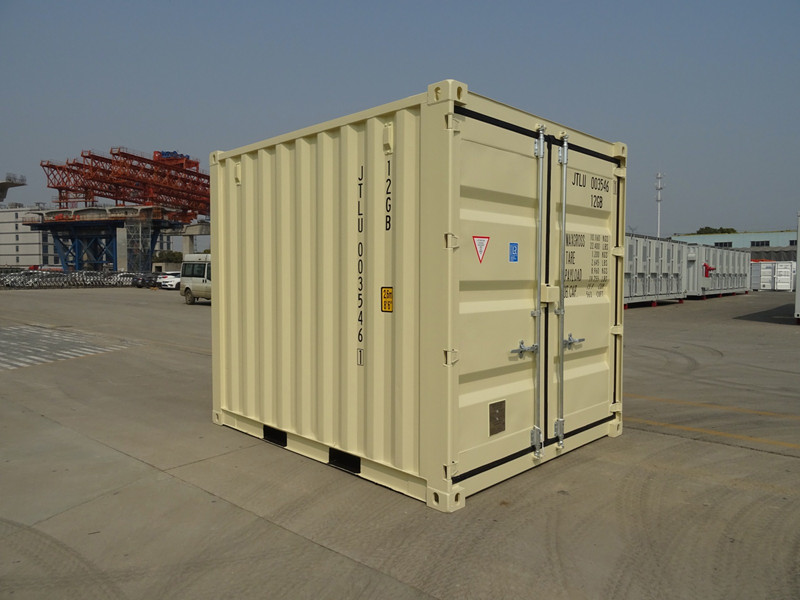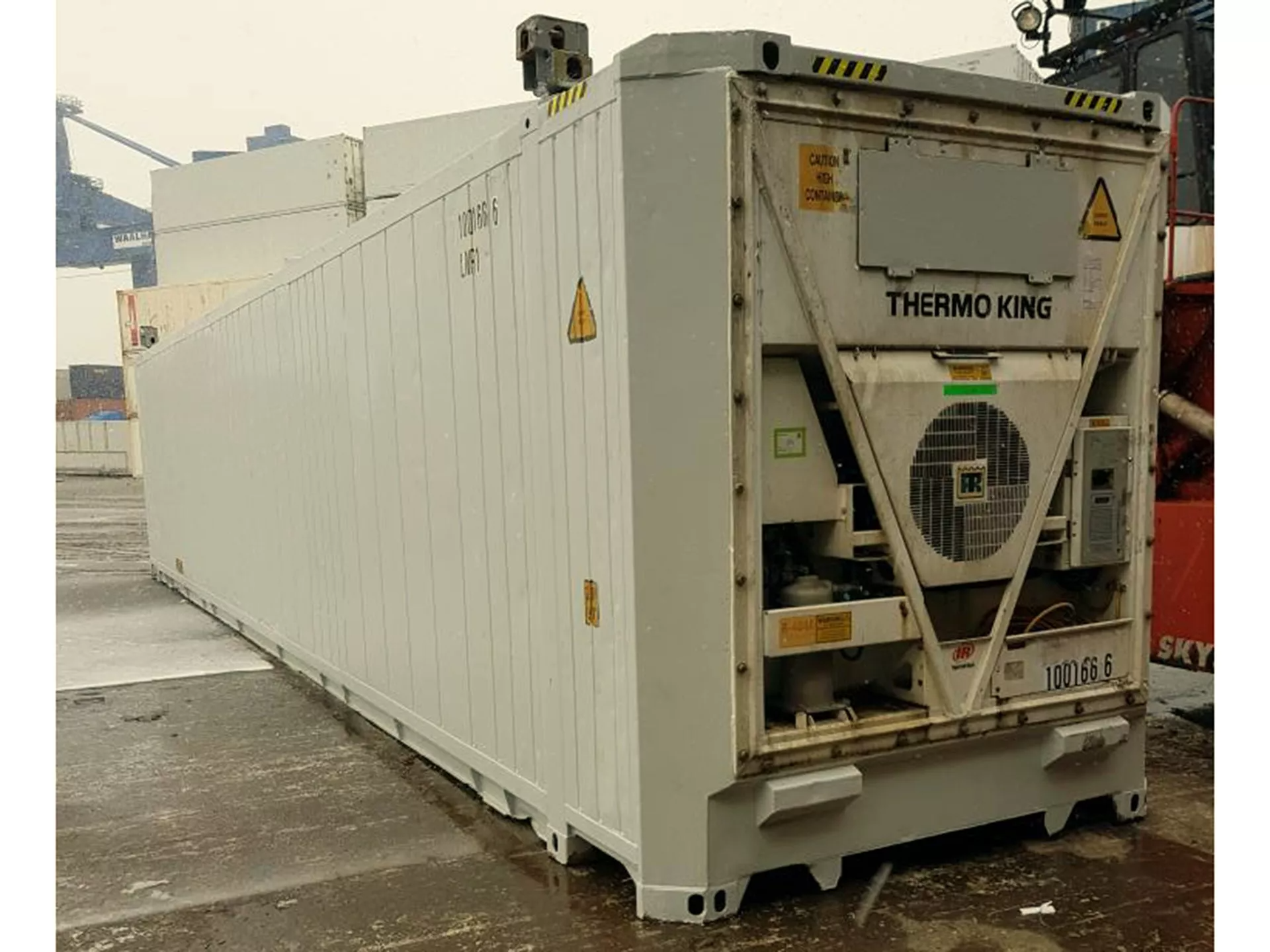Views: 0 Author: Site Editor Publish Time: 2025-03-19 Origin: Site








Refrigerated shipping containers are essential for transporting temperature-sensitive goods across long distances. With a variety of sizes available, selecting the right container is crucial for ensuring the safety and quality of your products during transit. Below, we summarize the key details about the common sizes of refrigerated containers, their features, and the industries that benefit from them.
The 20ft refrigerated container is compact and versatile. It’s designed for smaller shipments, offering sufficient space for businesses with limited cargo needs.
Dimensions: Length 19 ft 10.5 in, Width 8 ft, Height 8 ft 6 in
Suitable Uses: Great for smaller quantities of perishable goods like fruits, vegetables, and small pharmaceutical shipments.
Temperature Range: Can maintain temperatures from -20°F to 75°F (-29°C to 24°C), ensuring freshness for sensitive products.
Energy Requirements: Requires a three-phase power supply at 440/460V, making it energy-efficient for smaller loads.

The 40ft refrigerated container is ideal for medium to large shipments. With more space, it’s better suited for long-distance transportation of bulk items.
Dimensions: Length 40 ft, Width 8 ft, Height 8 ft 6 in
Capacity: Holds up to 2,700 cubic feet of cargo, making it perfect for larger shipments.
Suitable Uses: Commonly used for food products, pharmaceuticals, and larger industrial shipments.
Temperature Range: Maintains the same temperature range of -20°F to 75°F, providing reliable control for goods that require steady conditions.
Features: This size offers a robust design and high capacity, ensuring durability during long-distance travel.

The 40ft high cube refrigerated container offers extra storage space compared to the standard 40ft version. This additional height allows for more volume, making it perfect for high-volume shipments.
Extra Storage Capacity: With additional height, it provides better volume for larger shipments.
Dimensions: Length 40 ft, Width 8 ft, Height 9 ft 6 in
Capacity: 2,380 cubic feet, accommodating bulkier goods that require more space.
Benefits: The increased height is ideal for large businesses and those needing to ship large quantities of goods, such as bulk food shipments or sensitive medical supplies.

In addition to the more common 20ft, 40ft, and 40ft high cube sizes, some industries use less conventional sizes like the 10ft and 45ft containers.
10ft Refrigerated Containers: These are perfect for very small shipments, especially when space is tight. They’re used for highly sensitive products like rare medicines or small batches of food.
45ft Refrigerated Containers: Slightly longer than the 40ft container, these offer extra room for large shipments. While less common, they’re valuable for businesses needing more space but not the additional height of a high cube container.
One of the most important aspects of refrigerated containers is their ability to control temperature.
Most refrigerated containers can adjust their temperature between -20°F to 75°F (-29°C to 24°C), ensuring that products like pharmaceuticals, food, and seafood stay at optimal conditions during transit.
Temperature Precision: Essential for maintaining the quality of sensitive goods, preventing spoilage, and ensuring compliance with regulations, especially in the pharmaceutical industry.
Refrigerated containers are built to withstand harsh conditions. The interior is typically made from steel or aluminum, ensuring durability and resistance to wear and tear. These materials also help in maintaining the temperature inside the container.
Resilient Design: Suitable for international shipping, where containers often face exposure to extreme weather and rough handling.
Most refrigerated containers require a three-phase power supply, usually at 440/460V. This allows them to efficiently manage energy consumption, keeping costs down while ensuring the containers maintain the correct temperatures.
Power Flexibility: Containers can adapt to different voltage systems depending on the shipping route, making them versatile for global shipping.
Refrigerated containers are designed for easy cleaning. Features like air curtains and sealed drainage systems help maintain a hygienic environment, preventing contamination during the transport of sensitive goods.
Sanitary Design: Essential for transporting food, pharmaceuticals, and other hygiene-sensitive products, ensuring they arrive in perfect condition.
One of the main benefits of refrigerated containers is their ability to provide consistent temperature control. This feature ensures that goods, such as food and medicine, are kept at the correct temperature, reducing spoilage and maintaining product quality.
Prevention of Spoilage: By maintaining stable temperatures, refrigerated containers help extend the shelf life of perishable products, making long-distance shipping possible.
Refrigerated containers are used across many industries, including food, pharmaceuticals, electronics, and agriculture.
Food Industry: Perfect for transporting perishable items like meat, fish, dairy, and fresh produce.
Pharmaceuticals: Essential for shipping temperature-sensitive drugs and vaccines.
Electronics and Agriculture: Protect sensitive materials from temperature fluctuations during transport.
Refrigerated containers are designed for durability, meaning they last longer and require less maintenance. Over time, this helps reduce costs associated with replacement and repairs. Additionally, modern refrigerated containers are more energy-efficient, offering a more sustainable shipping solution.
Long-Term Savings: The robust construction and energy-efficient features help businesses save money while maintaining the integrity of their shipments.
Refrigerated containers play a vital role in ensuring the safe and efficient transport of temperature-sensitive goods across the globe. By choosing the right size container and understanding its features, businesses can ensure that their products arrive safely and on time.

A: The most common sizes are 20ft, 40ft, and 40ft High Cube refrigerated containers. These sizes are widely used for transporting temperature-sensitive goods, such as food and pharmaceuticals.
A: The main difference is the height. A 40ft high cube container is one foot taller than a standard 40ft container, providing extra storage capacity. It is ideal for bulk shipments and large cargo that requires more vertical space.
A: The internal dimensions of a 20ft refrigerated container are approximately:
Length: 17 ft 11 in
Width: 7 ft 8 in
Height: 7 ft 6 in
FAQS: This size is suitable for smaller shipments and businesses with limited cargo needs.
A: Most refrigerated containers can maintain temperatures between -20°F and 75°F (-29°C to 24°C). This allows them to transport a wide range of temperature-sensitive products, including frozen food, dairy, and medical supplies.
A: Refrigerated containers are used in various industries, including:
Food & Beverage (meat, seafood, dairy, fresh produce)
Pharmaceuticals (vaccines, insulin, temperature-sensitive medicines)
Agriculture (flowers, seeds, organic products)
Electronics (temperature-sensitive components)
A: Yes, they typically require a three-phase power supply at 440/460V. Some models can operate on 208/230V, but they may require a higher amperage. Ensuring a stable power source is essential for maintaining temperature control.
A: Weight capacities vary by size:
20ft container: Up to 52,800 lbs
40ft container: Up to 67,200 lbs
40ft high cube container: Up to 70,550 lbs
A: Yes, they are designed for both short and long-distance transportation. Their insulation and temperature control systems ensure goods remain fresh and safe, even on extended shipping routes.
A: While 20ft, 40ft, and 40ft high cube containers are the most common, other sizes exist:
10ft refrigerated containers (for small, specialized shipments)
45ft refrigerated containers (for extra-large cargo requiring additional space)
A: They feature steel or aluminum interiors, air curtains, and sealed drainage systems for easy cleaning. These features help prevent contamination and ensure that perishable goods remain sanitary during transit.
The size you choose affects more than just storage. Larger containers reduce the need for multiple shipments, saving time and costs. Smaller containers like the 20ft option are great for smaller batches or businesses just starting. Each size serves different needs, from food to pharmaceuticals to industrial goods. Depending on your cargo, choosing the right size is crucial for cost-effective and efficient transport.
Refrigerated containers, or "reefers," are essential for transporting temperature-sensitive goods. The most common sizes are 20ft, 40ft, and 40ft high cube containers, each designed to suit different shipment volumes. 20ft containers are ideal for small shipments, while 40ft containers are better for larger, long-distance transport. 40ft high cube containers offer extra storage space for high-volume shipments. Additionally, less common sizes like 10ft and 45ft containers cater to specialized shipping needs. These containers play a vital role in cold chain logistics, ensuring goods stay fresh during transport.